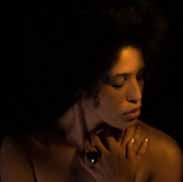Physics Final Chapter 13 Multiple Choice – Flashcards
Unlock all answers in this set
Unlock answersquestion
Which portion of the electromagnetic spectrum is used in a television? a) infrared waves b) X rays c) radio waves d) gamma waves
answer
c
question
Which portion of the electromagnetic spectrum is used in a microscope? a) infrared waves b) X rays c) visible light d) ultraviolet light
answer
c
question
Which portion of the electromagnetic spectrum is used to identify fluorescent minerals? a) ultraviolet light b) X rays c) infrared waves d) gamma rays
answer
a
question
What is the frequency of infrared light of 1.0x10-⁴ Hz frequency? a) 0.050 m b) 0.060 m c) 0.10 m d) 0.20 m
answer
c
question
When red light is compared with violet light: a) both have the same frequency b) both have the same wavelength c) both travel at the same speed d) red light travels faster than violet light
answer
c
question
If you know the wavelength of any form of electromagnetic radiation, you can determine its frequency because a) all wavelengths travel at the same speed b) the speed of light varies for each form c) wavelength and frequency are equal d) the speed of light increases as wavelength increase
answer
a
question
The farther light is from a source: a) the more spread out light becomes b) the more condensed light becomes c) the more bright light becomes d) the more light is available per unit area
answer
a
question
If you are reading a book and you move twice as far away from the light source, how does the brightness at the new distance compare with that at the old distance? It is: a) one-eighth as bright b) one-fourth as bright c) one-half as bright d) twice as bright
answer
b
question
When red light and green light shine on the same place on a piece of white paper, the spot appears to be a) yellow b) brown c) white d) black
answer
a
question
Which of the following is not an additive primary color? a) yellow b) blue c) red d) green
answer
a
question
Which of the following is not a primary subtractive color? a) yellow b) cyan c) magenta d) blue
answer
d
question
If you looked at a light through the lenses from two polarizing sunglasses that were overlapped at right angles to each other: a) all of the light would pass through b) most of the light would pass through c) little of the light would pass through d) none of the light would pass through
answer
d



